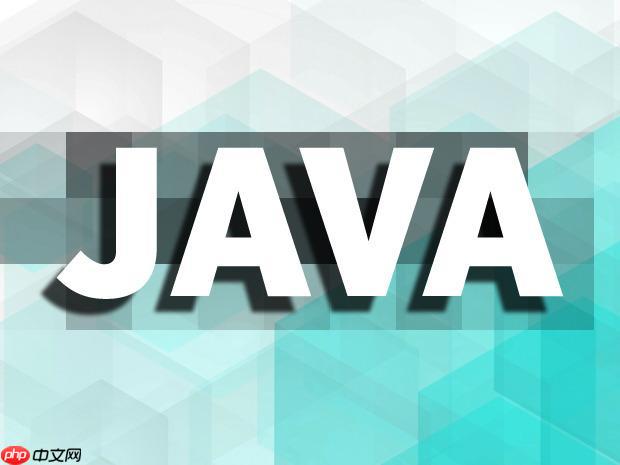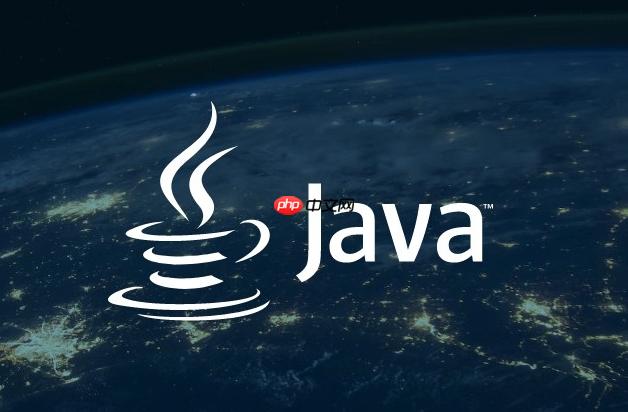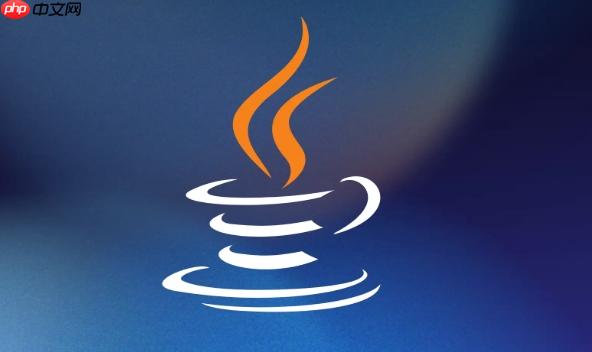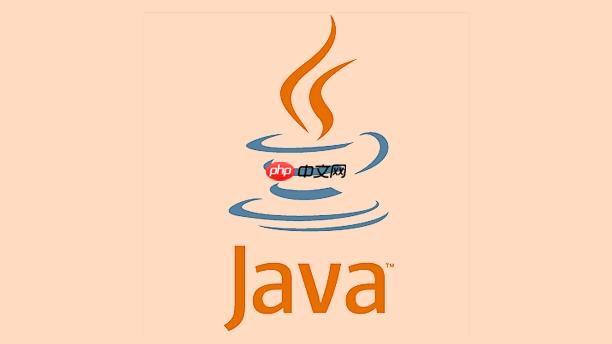jackson处理json序列化核心在于objectmapper类及其注解。1. 创建objectmapper实例并调用writevalueasstring()方法可实现java对象到json字符串的基本转换;2. 使用@jsonproperty可自定义字段名称,@jsonignore可忽略特定字段,@jsonformat可用于格式化日期类型字段;3. 对于循环引用问题,可通过@jsonidentityinfo注解配合唯一id避免无限递归;4. objectmapper还支持高级配置,如设置日期格式、启用格式化输出等,从而灵活定制序列化行为以满足多样化需求。掌握这些内容即可高效利用jackson处理json数据。

快速理解:Jackson是Java处理JSON的强大工具,通过注解、配置和灵活的API,可以轻松地将Java对象转换为JSON字符串,反之亦然。关键在于理解ObjectMapper的使用,以及各种注解如何影响序列化和反序列化的过程。

解决方案:

Jackson处理JSON序列化,核心在于ObjectMapper类。 你需要创建一个ObjectMapper实例,然后使用它的writeValueAsString()方法将Java对象转换为JSON字符串。
立即学习“Java免费学习笔记(深入)”;

import com.fasterxml.jackson.databind.ObjectMapper;
import java.io.IOException;
public class JacksonSerialization {
public static void main(String[] args) {
try {
// 创建 ObjectMapper 实例
ObjectMapper mapper = new ObjectMapper();
// 创建一个 Java 对象
Person person = new Person("Alice", 30);
// 将 Java 对象序列化为 JSON 字符串
String jsonString = mapper.writeValueAsString(person);
// 打印 JSON 字符串
System.out.println(jsonString);
} catch (IOException e) {
e.printStackTrace();
}
}
static class Person {
public String name;
public int age;
public Person(String name, int age) {
this.name = name;
this.age = age;
}
}
}这段代码展示了最基本的序列化过程。 但实际应用中,你可能需要更精细的控制,例如忽略某些字段,或者自定义字段的命名。 这时候,Jackson的注解就派上用场了。
Jackson提供了丰富的注解来控制序列化的行为。 例如,@JsonIgnore可以忽略某个字段,@JsonProperty可以自定义字段的名称,@JsonFormat可以格式化日期类型的字段。

Easily find JSON paths within JSON objects using our intuitive Json Path Finder
 30
30

import com.fasterxml.jackson.annotation.JsonIgnore;
import com.fasterxml.jackson.annotation.JsonProperty;
import com.fasterxml.jackson.databind.ObjectMapper;
import java.io.IOException;
import java.util.Date;
import com.fasterxml.jackson.annotation.JsonFormat;
public class JacksonAnnotations {
public static void main(String[] args) {
try {
ObjectMapper mapper = new ObjectMapper();
AnnotatedPerson person = new AnnotatedPerson("Bob", 25, "secret");
String jsonString = mapper.writeValueAsString(person);
System.out.println(jsonString);
} catch (IOException e) {
e.printStackTrace();
}
}
static class AnnotatedPerson {
@JsonProperty("fullName") // 自定义 JSON 字段名
public String name;
public int age;
@JsonIgnore // 忽略该字段
public String secret;
@JsonFormat(pattern="yyyy-MM-dd")
public Date birthday;
public AnnotatedPerson(String name, int age, String secret) {
this.name = name;
this.age = age;
this.secret = secret;
this.birthday = new Date();
}
}
}在这个例子中,name字段在JSON中会被序列化为fullName,secret字段会被忽略,birthday字段会被格式化成yyyy-MM-dd的格式。
循环引用是个棘手的问题,Jackson默认会抛出异常。 为了解决这个问题,你可以使用@JsonIdentityInfo注解来为每个对象分配一个唯一的ID,从而避免无限递归。
import com.fasterxml.jackson.annotation.JsonIdentityInfo;
import com.fasterxml.jackson.annotation.ObjectIdGenerators;
import com.fasterxml.jackson.databind.ObjectMapper;
import java.io.IOException;
public class JacksonCircularReference {
public static void main(String[] args) {
try {
ObjectMapper mapper = new ObjectMapper();
// 创建对象关系
Department department = new Department("IT");
Employee employee1 = new Employee("Charlie", department);
Employee employee2 = new Employee("David", department);
department.employees.add(employee1);
department.employees.add(employee2);
String jsonString = mapper.writeValueAsString(department);
System.out.println(jsonString);
} catch (IOException e) {
e.printStackTrace();
}
}
@JsonIdentityInfo(generator = ObjectIdGenerators.PropertyGenerator.class, property = "id")
static class Department {
public int id = 1; // 假设 id 是唯一的
public String name;
public java.util.List<Employee> employees = new java.util.ArrayList<>();
public Department(String name) {
this.name = name;
}
}
@JsonIdentityInfo(generator = ObjectIdGenerators.PropertyGenerator.class, property = "id")
static class Employee {
public int id = 2; // 假设 id 是唯一的
public String name;
public Department department;
public Employee(String name, Department department) {
this.name = name;
this.department = department;
}
}
}在这个例子中,@JsonIdentityInfo注解告诉Jackson使用id字段作为对象的唯一标识。 当Jackson遇到已经序列化过的对象时,会使用ID来代替整个对象,从而避免循环引用。
ObjectMapper提供了很多配置选项,可以满足更高级的需求。 例如,你可以配置日期格式,设置默认的可见性,或者注册自定义的序列化器和反序列化器。
import com.fasterxml.jackson.databind.ObjectMapper;
import com.fasterxml.jackson.databind.SerializationFeature;
import java.io.IOException;
import java.text.SimpleDateFormat;
public class JacksonConfiguration {
public static void main(String[] args) {
try {
ObjectMapper mapper = new ObjectMapper();
// 设置日期格式
SimpleDateFormat dateFormat = new SimpleDateFormat("yyyy-MM-dd HH:mm:ss");
mapper.setDateFormat(dateFormat);
// 使输出的 JSON 具有更好的可读性
mapper.enable(SerializationFeature.INDENT_OUTPUT);
ConfiguredPerson person = new ConfiguredPerson("Eve", 40);
String jsonString = mapper.writeValueAsString(person);
System.out.println(jsonString);
} catch (IOException e) {
e.printStackTrace();
}
}
static class ConfiguredPerson {
public String name;
public int age;
public ConfiguredPerson(String name, int age) {
this.name = name;
this.age = age;
}
}
}这段代码展示了如何配置ObjectMapper来设置日期格式和启用JSON的格式化输出。 通过灵活配置ObjectMapper,你可以定制序列化的行为,以满足各种各样的需求。 记住,Jackson的强大之处在于它的灵活性和可扩展性。 深入理解这些概念,你就能更好地利用Jackson来处理JSON数据。
以上就是Java中如何用Jackson处理JSON序列化的详细内容,更多请关注php中文网其它相关文章!

每个人都需要一台速度更快、更稳定的 PC。随着时间的推移,垃圾文件、旧注册表数据和不必要的后台进程会占用资源并降低性能。幸运的是,许多工具可以让 Windows 保持平稳运行。

Copyright 2014-2025 https://www.php.cn/ All Rights Reserved | php.cn | 湘ICP备2023035733号